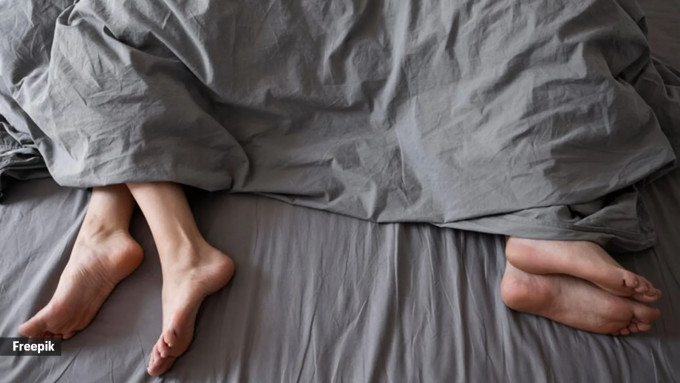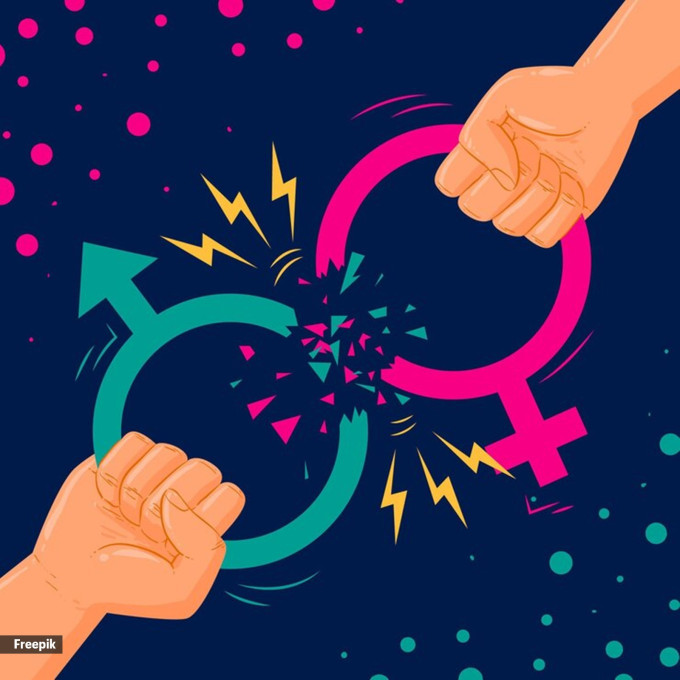The Big ‘O’: Why does orgasm gap exist and how to bridge it
We all know about the gender pay gap, but there’s another form of gender inequity at play that is often neglected and left unaddressed — the orgasm gap. And there are numbers to prove it.
According to research published in the German Journal of Sexual Research (Zeitschrift für Sexualforschung) in 2022 which surveyed 49,940 women and 48,329 men, 30 to 60 per cent of women reported reaching orgasm during hetero sex against 70 to 100 per cent of men.

While this disparity in orgasms exists between heterosexual women and men, lesbian and bisexual women have significantly more orgasms, according to research published in the Archives of Sexual Behavior in 2017.
Mapping orgasm gap
Bhavya Gupta, 22, is among the many women who have experienced this orgasm inequality.
“Most guys I dated weren’t aware of the common arousal points. They didn’t prioritise my sexual pleasure over theirs. Once they finished, they wouldn’t even care about my satisfaction,” says Gupta.
On the other hand, Snigdha Mishra, 40, a psychotherapist and mental health educator, counts herself as “fortunate” to have partners who have given importance to her sexual pleasure.
“I have always been communicative of my desires, so it was easier for my partners to understand what works for me. After all, sexual preferences differ from person to person,” explains Mishra.
However, Mishra recalls hearing experiences from her friends who struggled to reach an orgasm.
“A lot of women I know don’t recognise their desires, and those who do, feel shy and guilty about their sexual needs. Unfortunately, sexual pleasure is gendered in our society. Additionally, in a culture where this basic human desire is seen as shameful, it’s challenging for women to express their sexual needs,” she says.
Screaming it out
 Why does the orgasm gap exist? (Source: Freepik)
Why does the orgasm gap exist? (Source: Freepik)
Vaishnavi Prabhu, 29, attributed the orgasm gap to the lack of sex education in society. “I have experienced it 90 per cent of the time due to little to no emphasis on foreplay. Sex isn’t as straightforward as porn depicts it to be. Most of the content in porn shows penetration, while women rarely orgasm with just that,” says Prabhu.
“In our culture, sex is seen as a baby-making chore for women, so pleasure goes out of the window,” she adds.
Sachee Malhotra, co-founder, That Sassy Thing, says cultural ignorance of the clitoris is also among the reasons for the orgasm gap. “Most people are not aware of the clitoris and its function, and don’t know how powerful it is for sexual pleasure. Women need clitoral stimulation to orgasm, but basic education about female anatomy doesn’t exist — leading to inequality in the bedroom,” she adds.
For Neha Bhandari, 29, masturbation is more pleasurable than penis-in-vagina (PIV) sex. “Depictions of sex in the media often overlook how oral sex and touching can lead to orgasm for women. Men who are learning from this then don’t understand how women’s bodies work. That’s why using a sex toy or my own fingers is better, as I can control the narrative.”
Bhandari is not alone. A study published in the Journal of Sex and Marital Therapy in 2013, shows women experience greater sexual satisfaction and relative ease in reaching sexual arousal and orgasm through masturbation.
Rural-urban divide
This orgasm gap is more pronounced in rural India, in comparison to urban areas, say experts.
“Limited sexual education, coupled with conservative norms and restricted discussions around women’s pleasure, contribute to this disparity. Especially for women in rural areas – expressing what they want can be a bit of a challenge,” Dr Pavana S, consultant psychiatrist, sexologist, and relationship expert, Vidyaranyapura, Bangalore, notes.
“It’s like this unspoken barrier that makes it hard for them to be open about their desires, and that, in turn, creates a gap in awareness and communication in their relationships. To top it off, getting access to sexual health resources and empowerment programs is way trickier in rural regions,” she adds.
Closing the gap
 How to reduce the orgasm gap. (Source: Freepik)
How to reduce the orgasm gap. (Source: Freepik)
Sexual wellness educator Leeza Mangaldas says changing the discourse around female pleasure should be the first and foremost step to tackle this issue faced by women.
“Finding that heterosexual women are least likely to be able to have an orgasm during sex compared to other relationship structures points to something amiss with how straight people approach sex as opposed to something biologically different or wrong with women’s bodies,” says Mangaldas, the author of The Sex Book.
Mangaldas points out, “The real problem lies in the fact that penetration doesn’t lead to orgasm for most people with ‘vulvas’, and clitoral stimulation is required”.
Another factor that can help reduce orgasm inequality is communication, says Dr Rahul Chandhok, Head Consultant, Mental Health and Behavioural Science, Artemis Hospital, Gurugram.
“Partners should engage in open and honest discussions about sex. Openly discussing desires, preferences, and satisfaction during sexual encounters without judgment, instead of ‘faking’ an orgasm, enhances mutual understanding,” says Chandhok.
Dr Chanchal Sharma, obstetrician-gynaecologist, Daffodils by Artemis, Jaipur, encourages couples to explore “what feels good and what doesn’t”. “Individuals can experiment with different activities, positions, and forms of stimulation to find what works best for both partners,” Sharma says.
Dr Pavana S says promoting sex education that emphasises mutual pleasure and dispels myths surrounding women’s sexuality would be crucial in promoting orgasm equality.
“Learning the anatomy of each gender and challenging stereotypes that portray women as less interested in or deserving of sexual pleasure is vital for promoting gender equity in sexual experiences and fostering healthier, more fulfilling intimate relationships,” she points out.
Pallavi Barnwal, an intimacy coach, highlights the importance of intimacy coaching to help women discover pleasure. “I suggest pleasure mapping as a self-exploratory tool to understand different sensations that turn you on, which is in turn a powerful way to expand your pleasure potential with a partner.”
Couple’s therapist and mindful dating coach Prachi Saxena Vaish says she motivates couples to have a curiosity-based approach rather than a judgment-oriented one. “If we can reframe the way individuals approach sex, we can definitely bridge the gap,” she adds.
‘Much more than just personal pleasure’
All experts agree on one thing — orgasm equality is a strong indicator of greater gender equality in all aspects of life.
“For the bedroom dynamics to be inclusive, it would mean that you have equal access to things like education, healthcare, job opportunities, and so on. Asserting your right to equality in the bedroom is akin to asserting your rights in various other aspects of life, so an orgasm is indicative of much more than just personal pleasure. It’s a reflection of broader societal attitudes,” Mangaldas says.
“The orgasm gap is a systemic issue with its origin in patriarchy, which perpetuates the notion that women’s worth lies in childbirth, and not in their own pleasure.”
Disclaimer: The copyright of this article belongs to the original author. Reposting this article is solely for the purpose of information dissemination and does not constitute any investment advice. If there is any infringement, please contact us immediately. We will make corrections or deletions as necessary. Thank you.





